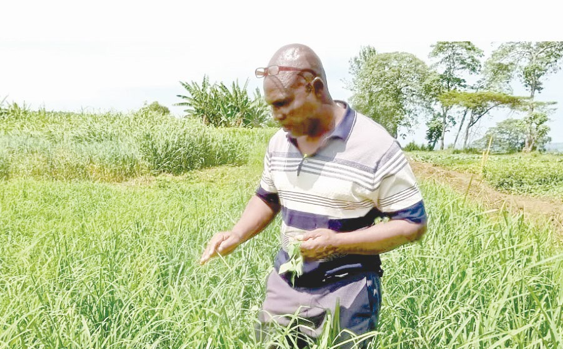Locals alarmed over cost of putting porridge on the table

For many years, porridge has been an indigenous diet among many households in Nandi County and the entire North Rift.
It is a nutritious drink consisting of millet and sorghum grains, consumed by both children and adults in the community.
However, the commodity is currently hardly available in the local eateries like before. Consumers have been forced to dig deeper into their pockets to order a cup of porridge for refreshment.
For the past two decades, the residents who are majorly farmers have gradually abandoned growing sorghum and millet which has led to shortage of the produce in the local markets.
The growing of indigenous grains is no longer popular in the region owing to intensivee management encompassing sorghum and millet farming.
Emily Kosgei, a sorghum farmer in Kesengei Village in Nandi South said that despite the high market demand for the grains, people shun growing such ancient crops due to high costs of operation.
She has been growing sorghum and millet for 20 years until recently when she started phasing out millet and remained with the sorghum crop in her one-acre farm. “Initially, sorghum and millet were also a major source of food in cooking ugali and porridge for my family. I sold surplus to the local market and earned good money to pay school fees and purchase household effects,” she stated.
Kosgei, 76, said that age was catching up with her and she opted for sorghum farming, mainly for subsistence. “Farming such indigenous crops needs passion and self-dedication. I noticed that my children cannot afford to inherit my sorghum and millet farm, it’s complicated and labour intensive ,” she said.
Among the regions where sorghum and millet are doing well include Nandi South along the escarpments and Tinderet hills.
“Weeding and harvesting the grass crops is tedious. It is the reason why most people do not grow them in large scale since it requires physical labour as it cannot be mechanised for fast and efficient crop production,” said Kosgei.
The locals have opted for other cash crops like coffee and tea farming that need minimal cost of operation.
Violet Cheptoo, the chair of a self-help group in Nandi County said that shortage of the produce hindered the progress of their processing and packaging of the porridge flour.
They had established their milling plant and secured Kenya Bureau of Standard (KEBS) license but lack of constant and sufficient supply of the sorghum and millet grounded the project. “We sourced the commodity from Uasin Gishu and Baringo counties but it was too costly and unsustainable.
Our milling plant was formulating sorghum and millet in making porridge among other children supplements,” said Cheptoo, noting that they had to close down the milling facility.
Learning institutions
At Kapsabet market a 90kg of sorghum is sold at Sh6,500 and a 2kg tin goes for Sh200. Millet is sold at Sh8,500 and a 2kg tin commonly known as gorogoro, retails at Sh300.
Despite the inadequacy, the grains are still the highly-sought commodities. A gourd of porridge costs between Sh50 and Sh100 and many prefer it over tea.
Learning institutions in Nandi County have since partnered with the county government to conduct research and mobilise the local farmers to adopt new variety crops that are resistant and have a high production rate.
County Executive, Agriculture Dr Kiplimo Lagat said that a series of training and extensional services have been initiated at Kaimosi Farmers Training College to empower farmers with the right varieties of the sorghum and millet crops to grow in the region.



